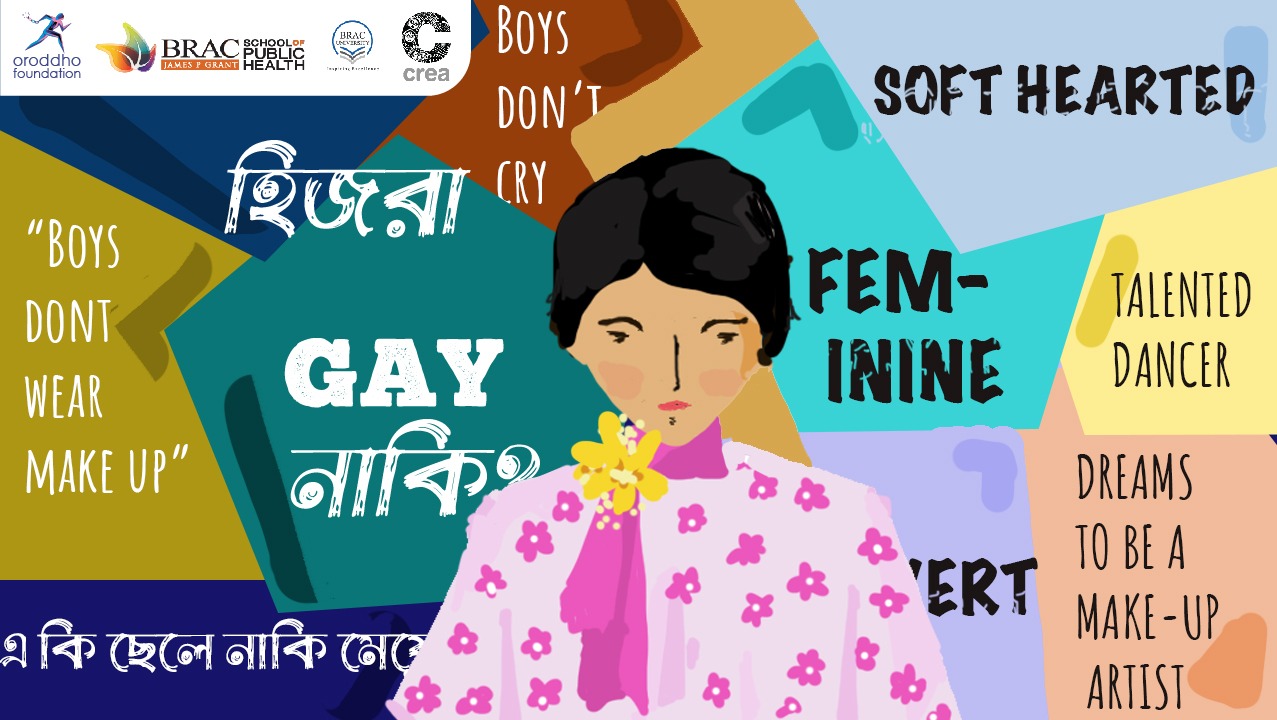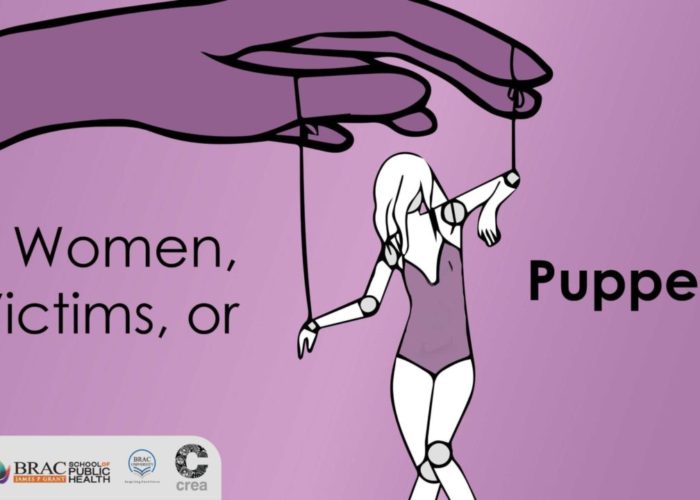Pink. An innocent color defined by humans the moment a child is born. Newborns get blankets according to the colours associated with their genders assigned at birth – blue for boys and pink for girls. Toys. Boys are made to play with action figures and cars, while girls get dolls and playhouses. Makeup. A simple array of tools designed to make people look more beautiful – but only for girls. Boys have no right to feel “beautiful.” Skincare. Just for women. Men who enjoy pedicures and manicures are “too girly” or effeminate; unmanly.
There’s no answer to why these particular traits are considered feminine. But one thing is clear: effeminate men are less accepted in society than masculine women. This is because femininity is associated with weakness. When people think of women, the words ‘‘polite”, “fragile,” and “obedient” pop up in most people’s heads. When people think of men, they think of strength, resilience, and domination. Effeminate men challenge this perception by embracing pink, talking about their emotions, and dressing up in an unconventional manner – all of which are normal human traits that should not be looked at from the lens of gender. Since society sees femininity as weak, most people reduce feminine men to weaklings who cannot protect themselves or others.
Having a high-pitched voice, being too thin, not possessing abs or ripped muscles, not being macho, being emotional, crying in public – these are just some of the ways men are shamed for being too feminine. Societal conditioning is reinforced throughout one’s lifetime, and those who resist are met with fierce criticism for their desire to stray from the norm.
A truly excruciating example of how men are shamed in Bangladesh for being “weak” is the denial of male rape. A UN multi-country study found that 2,374 men in Bangladesh reported being raped by other men. Another study conducted last year found that 1 out of 10 males encountered sexual harassment by other men or women. Victims are typically young boys who fall prey to close relatives or malicious teachers – on October 5, the principal of Markazul Quran Qawmi Madrasa and Lillah Boarding in Narayanganj was arrested for raping a male student for 15 days after sedating him with sleeping pills.
Men don’t speak up about these issues as they’ve been conditioned to bottle up their emotions, so they never open up about their trauma. In reality, this makes them susceptible to more damage. Even when they dare to voice out their experiences, law enforcement officers shun them and refuse to cooperate. In well-publicized cases, the language used by the media belittles the lived realities of the victims. Men can be “sodomized,” “mistreated” or “be subjected to genital trauma,” but they can’t be raped. Similarly, people’s reactions imply that these violations are “unnatural” or “abnormal.” Words like these hinder men from realizing that they are victims of rape and sexual assault.
Unfortunately, the stigma extends to the justice system as well, causing bizarre loopholes. In Bangladesh, rape and sexual harassment are punished according to Section 375, 376, 377 of the Penal Code, and Section 9 and 10 of the Women and Children Repression (Prevention) Act 2000. Our laws carry colonial legacies, leading to a gender-specific and discriminatory definition of rape in Section 375: “A man is said to commit “rape” who except in the case hereinafter excepted, has sexual intercourse with a woman.” Since men cannot file lawsuits under Section 375, they resort to Section 377, which reads, “Whoever voluntarily has carnal intercourse against the order of nature with any man, woman or animal, shall be punished…”. However, commonwealth countries in Asia have weaponized this law to criminalize same-sex sexual relations. This puts men in a precarious position; whether they can push for justice through this law is questionable since they may get punishment instead of justice. What’s ridiculous is the discrepancy in the ages of children who are molested, which could have been an avenue for young boys to see their perpetrators suffer. The 2000 Act defines a “child” as any individual under the age of 16, but the Children Act 2013 considers anyone under 18 to be a child. Thus, it’s unclear whether minors aged 16-18 can file rape cases under the 2000 Act.
Furthermore, some societal myths prevent the acknowledgment of male rape. Firstly, male erection is presumed to always signify sexual arousal. This doesn’t take into account how they may get an erection due to fear or bursts of anger. Secondly, it is thought that men will always give consent to sexual intercourse. This paints men as carnal, animalistic beings who function on primal instincts.
Another hurdle effeminate men face is being called a hijra as a slur or insult. The word is used to denote impotence (hinting that they have been castrated or lack “manliness”), and fragility. Effeminate men tend to be silenced through this type of intimidation, which is often perceived as being extremely degrading. They find this word offensive as the word hijra has a negative connotation: people think of hijras as freaks of nature, shunning them with the most atrocious levels of hatred and bigotry. Not only is this notion humiliating to effeminate men, but this also deeply misrepresents the hijra community and does not delve into what hijra truly means.
The word hijra should not be used to offend anyone – it describes a community of close-knit people and their special culture and lifestyle. It portrays their unique struggles. It gives meaning to their identities and allows them to share their stories with people who had similar life experiences.
Hijras are well-documented in our sub-continental history (but not known by most): they held key roles such as political advisors, administrators, and other positions in court and royal hierarchies during the Mughal era. They were believed to possess divine power and were frequently sought out by the massesfor blessings. It was only after the British Raj declared them a “criminal tribe” in 1897 that Hijras lost their privileges.
Structural and legislative changes must be enacted to give effeminate men and hijras the resources to uplift themselves. A long road lies ahead: the government must work with prominent Hijra activists who can advocate for changes the community needs as the community knows what’s best for themselves.
All layers and sections of society must be made to understand that the word “Hijra” is not a slur, and femininity is not synonymous with weakness. We can take small steps to normalize femininity in men. Don’t limit your son’s toys to just monster trucks and race cars; let him play with whatever he wishes to, even if that means playing with Barbie dolls. If he grazes his knee and starts to cry, don’t shush him – tell him it’s okay to cry and release the pain instead of saying, “crying is just for girls.” Give your teenage brother tips to maintain healthy skin and buy him sunscreen and moisturizers. Buy your husband a pink shirt because colours have no gender. Compliment your male friends by calling them beautiful every now and then. Encourage them to talk about their emotional struggles with you and ask them to open up about their hardships. Outside of our personal lives, we must push for radical changes within our society. Discrepancies in the ages of minors must be resolved. The legal definition of rape must be changed to include men and Hijra people in conversation spheres. Only with such radical shifts in narratives can a new dawn of progress be ushered in.


